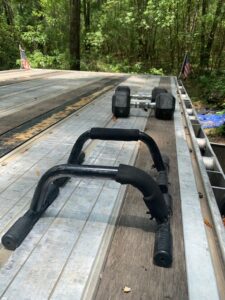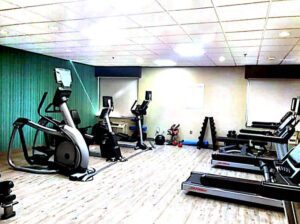TAKE THE TOUR
Techniques to Improve Efficiency
T.R.U.C.K.E.R. is a quick guide to the things every good trucker needs to know to be on the ‘road to success’. You will find tips and tricks to make your ride a smoother, more comfortable and more efficient experience.
T.R.U.C.K.E.R.
T. Trip planning
R. Reaching your daily goals
U. Understanding your freight
C. Captain of your rig
K. Keeping your cool
E. Exercising
R. Road to success
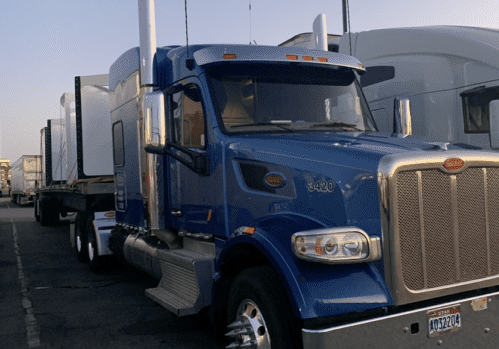
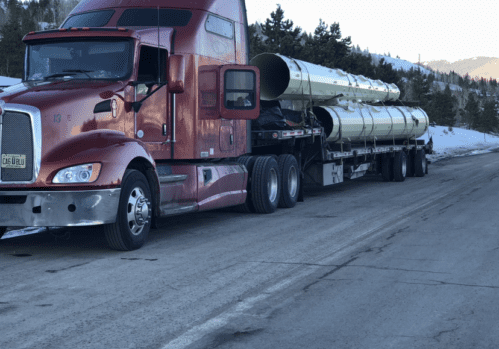
WATCH NOW
The first thing you need to do before you even get behind the wheel of a fully-loaded tractor-trailer is to plan where you are going to go. In order to plan your trip successfully, there are three major things to consider:
- Routing: How you are getting from point A to point B
- Fueling: Where and when you are fueling your rig
- Layovers: Where and when you are going to stop
Routing: It's important to make sure the route you choose has no truck restrictions. Things to think about are weight limits, low clearances, and bridge laws. Best practice: Plan your trip using a road atlas (Trucker's edition) accompanied by a certified truck GPS for origin and destination.
Fueling: Find out what fuel stops are on your route, and make sure they are compatible with your fuel department. Most carriers get larger discounts when they use a particular fuel stop to purchase their fuel. Also, be sure there is plenty of room for your rig to enter and exit the fuel aisles, as some stops are designed for smaller commercial vehicles. There are apps that you can download that show size and location of fuel stops along whatever route you decide to take. It's also a good idea to read the reviews of these stops to ensure the safety of your cargo and yourself.
Layovers: With truck parking being an issue within our industry, picking two or three locations for your layover can be a good idea. Pick your goal location, then pick a location 50-100 miles short of your goal in case you encounter delays along your route. You may also want to consider choosing a third location 50-100 miles farther than your intended goal. You will find days when you have no delays and extra time on your clock. It would then make sense to get further toward your destination. With a third layover location chosen, it can benefit you when and if the opportunity presents itself.
Without a proper trip plan, you are welcoming stress and emotion to a line haul that may already have too much of both. Planning your route in advance gives you peace of mind and helps you to prepare for the unexpected.
In my professional opinion and experience, drivers who plan their trip using 90% road atlas (Truckers Edition) and 10% GPS are likely to have the best success in the industry.
WATCH NOW
We all want to meet the goals we have set for ourselves on our route. Fortunately, there are a few things you can do to help prevent delays and ensure you meet your goals. These are some of the most vital things you can do:
- Equipment Maintenance: Make sure your equipment is 100% functional and working properly. Make sure the following are filled to manufacturer and company guidelines:
- Oil
- Coolant
- Tires
- Pre and Post-Trip: Make sure you do a 15-minute pre-trip followed by a 15-minute post-trip daily. Each company should provide you with its own pre-trip and post-trip checklists. Conducting more inspections when you are fueling, loading, and delivering will only increase your margin for success. According to the D.O.T. website, there are approximately 150 items on the standard checklist.
- King Pin: Make sure that your trailer's king pin is locked to the tractor every time that you leave your rig unattended.
- DOCUMENTATION: Make sure you have valid documentation in your rig before you leave out on your line haul. Proof of insurance cabcard ( tractor registration ) Any required permits such as UCR registration, NY Hunt sticker, ect. These documents should be kept in a binder/folder in your rig at all times.
- Flatbeds: Check your tie-downs; make sure they are secured and not damaged or torn. When you are tying down a load, make sure to use the proper straps, chains, and/or binders that are required for tying down that particular load. This is basic information that the driver will learn from their company, of which tie-downs are required for each particular material being hauled.
- Trailer Debris: Make sure that your trailer is free of any debris that may blow off while you are en route to your destination.
- Delivery Checklist: When you are finished delivering a load, make sure all dunnage, tarps, and other tools such as binders, chains, and ladders are properly secured before heading off to your next load.
- Reefer/Dryvan: Tips on Efficiency
WATCH NOW
When you are driving with a fully loaded trailer, it is important to be aware of the weight of your load. Here are some things to consider for a smoother and safer ride.
Loading Freight: When you are being loaded, make sure you are present and/or aware that they load your trailer by distributing the weight equally throughout your trailer.
Example of allowable weight distribution on your trailer:
- 12,000 lbs on steering axles
- 34,000 lbs on drive axles
- 34,000 lbs on tandem axles
However, if you have a spread-axle trailer, which most flatbed companies use, you can have up to 40,000 lbs on the tandem axles. But you can never exceed the maximum 80,000 lb weight restrictions. If you see that your load exceeds the 80,000 lbs max weight limit, you must then make the shipper aware of it. They can then make whatever adjustments are needed to conform to regulations. This is usually resolved by removing freight and adjusting your bill of lading.

Make sure that height restrictions are followed as well. The maximum height on a load is 13'6 ft from the ground to the top of your load. Make sure that the freight is within the parameter of your trailer and not hanging over your trailer.
Braking Considerations: It takes a fully loaded tractor-trailer approximately 370 ft to come to a complete stop when traveling 55 mph. That's longer than the length of a football field! To increase the safety of everyone, you should always have at least (6 - 8)seconds following distance when driving in fair conditions. That means that it should take (6 - 8) seconds for you to pass where the car before you has just been. You should always increase your following distance when bad weather occurs. Depending upon the severity of the weather conditions, there are some situations when it's unsafe to be driving at all. Use your best judgment for the safety of everyone on the road.
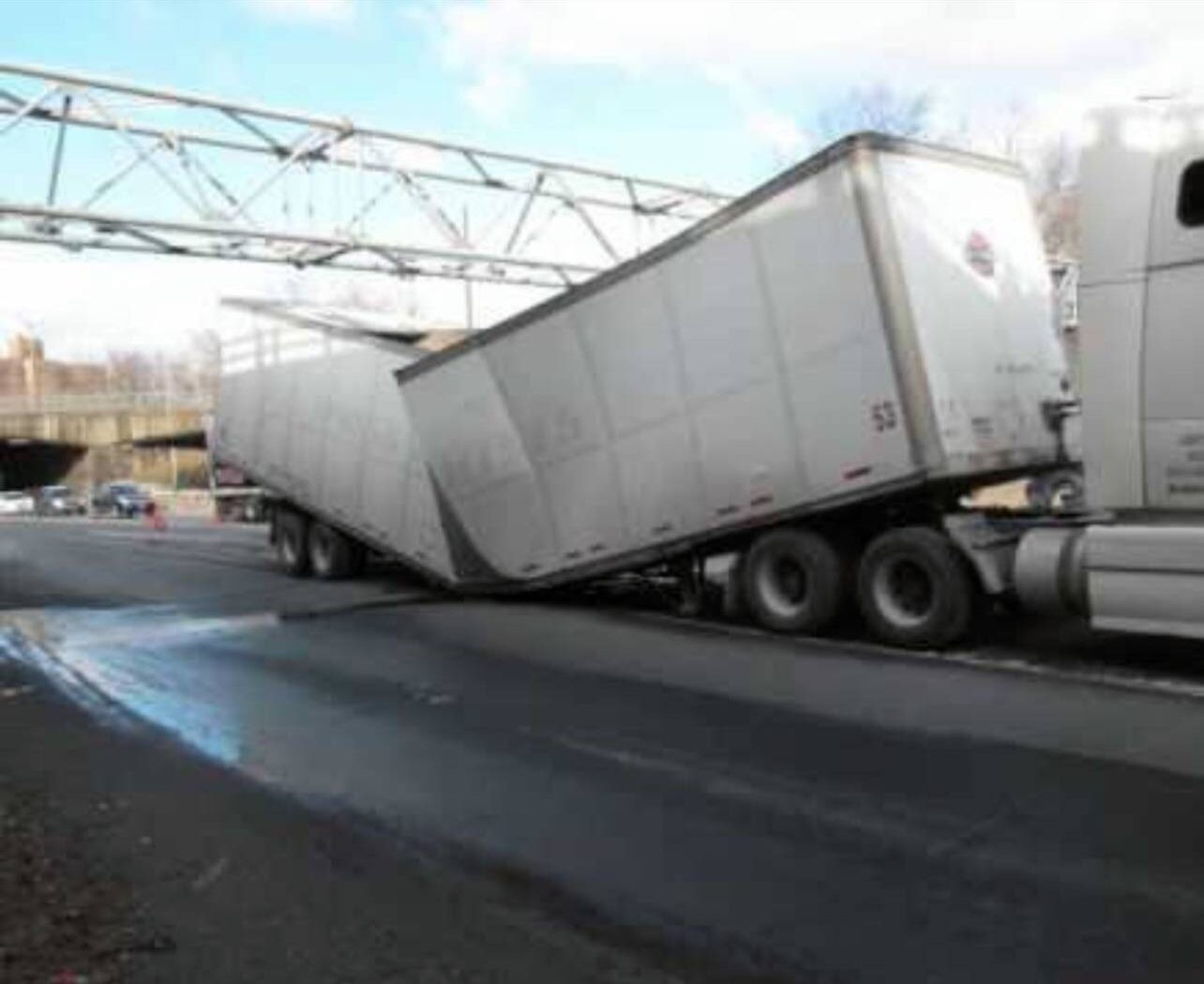
Ramp Speed: When entering and exiting highway ramps, you should take the ramp at half the posted speed. It's safer and more logical to add speed and have full control of your vehicle when entering and exiting ramps, so you should go slower and add speed if you need to. Entering a ramp too fast may force you to apply your brakes with enough force, causing your load to shift, which can result in a rollover.
Fact: Safe following distance. Proper weight distribution and load securement will ensure safety in making turns, entering and exiting highways, and stopping smoothly.
WATCH NOW
You are the captain of your rig! Every decision begins and ends with you.
STAY ALERT: Scan your mirrors every 5 - 8 seconds.
Stay firm: Do not let dispatchers, brokers, traffic, or family members influence you to drive out of your comfort zone.
Customer attitude: Lead by example and treat others the way you would like to be treated. When arriving at a customer, always greet them with a pleasant and respectful attitude. In most cases, this will initiate a positive rapport and can determine when and how you are getting loaded and unloaded.
Dealing with rude behavior: When encountering rude behavior from other drivers or employees at the shipper or receivers, try to be humble and not take anything personally, unless it's directed at you, personally. Everybody has bad days every now and then, and it probably doesn't have anything to do with you. If you feel that you are being targeted, do not get into an altercation. That will only make matters worse. Simply walk away, if you can, and contact your company dispatcher/broker to inform them of the situation.
Always remember; your image is not only a reflection of you but also the carrier and/ or broker that you represent.
WATCH NOW
So what do you do when you get delayed? Keep your cool!
Delays: More often than not, you are going to encounter some type of delay during your line haul. This could be from accidents, construction, aggressive or inexperienced drivers. When a driver sees their trip plan and daily goals slowly going out the window due to delays, frustration is likely to set in. If you happen to find yourself in this type of situation, do not take matters into your own hands, for this can cause you to drive out of your comfort zone. Gain your composure, contact your company dispatcher or broker so that they may inform the customer of a possible delay or to reschedule, if needed.

There is no load or job worth your life or anyone else's. Keep your cool and make it safe to drive another day!
WATCH NOW
Exercise is very important to have a safe and healthy driving career. Drivers are bound by a 14-hour clock, so many drivers feel as though they don't have time for exercise.
Here are a few recommendations for how to incorporate it into your busy schedule:
Walk around: When taking your required 30-minute break, get out of your truck and walk around it. Check your load, and tires, doing some stretches along the way.
Parking: When parking at a truck stop, park farther away from the facilities. This will allow for a longer distance to walk and help increase blood circulation.
Waiting for Loads: When waiting at a customer location to get loaded or unloaded, you are usually waiting in a staging area. Take this time to do some additional stretches. Examples: jumping jacks, and also while keeping your legs straight, reach down and touch your toes. These are just 2 examples. Do whatever works best for you.
WATCH NOW
The road to success starts with you. You have now completed this course. You are on your way, with the information and tactics in hand, to become a better driver for tomorrow's trucking industry.
Please leave any tips on how we can improve our course, and together we can make our highways and interstates safer for everyone to drive on.

